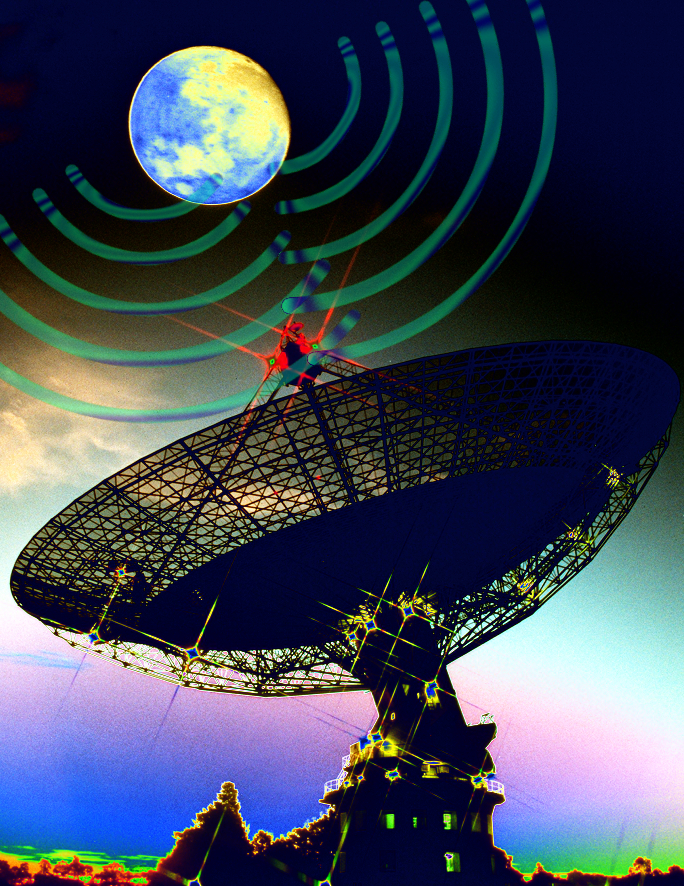Parkes telescope honoured
 ‘The Dish’ – Australia’s iconic Parkes radio telescope – has been added to the National Heritage List.
‘The Dish’ – Australia’s iconic Parkes radio telescope – has been added to the National Heritage List.
The Federal Government has announced that the telescope, owned and operated by the CSIRO, is the first functioning scientific instrument to be added to the list.
The 64-metre diameter telescope at CSIRO’s Parkes Observatory was completed in 1961, and continues to be used by Australian and international astronomers in the search for answers to some of the Universe’s greatest scientific questions.
It has played a major role supporting NASA’s missions to explore our Solar System.
In July 1969, alongside NASA’s Honeysuckle Creek Station near Canberra, the telescope received television signals from the Apollo 11 mission to the Moon and sharing this technological feat with 600 million people around the world.
Minister for Industry, Science and Technology Karen Andrews says the Parkes Observatory is a key part of Australia’s scientific capability.
“The Dish is part of Australia’s proud cultural and scientific history and to this day continues to serve as an important tool in our understanding of the Universe,” Ms Andrews said.
“As Australia again plays a critical role in the next efforts to put people on the Moon, and go on to Mars, this listing couldn’t come at a more appropriate time.”
CSIRO Chief Executive Dr Larry Marshall says the Parkes radio telescope is an icon of Australian science and innovation.
“Australia has a long and proud history of science-driven innovation, from our first digital computer – CSIRAC, to the first air defence radar which helped to pave the way for the new field of radio astronomy after World War II, and more recently the development of fast Wi-Fi that connects people across the world to the internet,” Dr Marshall said.
“While the Parkes telescope may be old enough to qualify for the National Heritage List, it continues to operate as one of the world’s leading astronomy instruments, observing the Universe day and night, seven days a week, with the most advanced radio receiver systems in the world.”
Its instrumentation has been continually upgraded so the telescope is now 10,000 times more sensitive than when it was first built.
Using the Parkes telescope astronomers have found most of the known pulsars, rapidly spinning neutron stars, and identified the first ‘fast radio burst’, a phenomenon that researchers around the world are racing to explain.
Professor Naomi McClure-Griffiths from the Australian National University spent over 2,000 hours observing the Milky Way using the Parkes telescope for the Southern Galactic Plane Survey and the Galactic All Sky Survey.
“Parkes was the very first telescope I visited as a student and it has remained a constant companion throughout my career,” Professor McClure-Griffiths said.
“I have exploited its incredible sensitivity to reveal the Milky Way’s interstellar gas in all its glory.
“As far as telescopes go, Parkes was my first love – a love that has been kept alive through CSIRO’s outstanding instrumentation on this grand icon of radio astronomy.
“Parkes is as much a marvel of engineering now as it ever was.”
The Mayor of Parkes Shire Council, Councillor Ken Keith OAM, said the Parkes community in Central West NSW is very proud of the telescope.
“It holds a special place in all of our hearts,” Cr Keith said.
“The telescope has attracted an array of talented staff throughout its years, embedding a base of scientific and intellectual knowledge and culture within our region which has in turn further stimulated a scientific interest within the broader community and inspired our young citizens.”
Some of the CSIRO Parkes radio telescope’s top achievements are as follows:
- 1961: Construction of the 64-metre diameter telescope at CSIRO’s Parkes Observatory is completed, an achievement of engineering and technical design
- 1962: Researchers using Parkes find that our Galaxy has a magnetic field a million times weaker than Earth’s magnetic field.
- 1968: Astronomers using Parkes detect pulsar signals, just weeks after UK researchers announce the discovery of pulsars
- 1969: Parkes receives television signals from the Apollo 11 Moon landing and relay them to a worldwide audience of 600 million people
- 1973: Parkes is used to discover the Magellanic Stream, a long trail of hydrogen gas flowing from two small neighbouring galaxies called the Large and Small Magellanic Clouds
- 1982: Researchers using Parkes discover a quasar called PKS 2000-330, the most distant object in the Universe known at the time
- 1998-2003: Astronomers carry out a survey with Parkes that reveals a new spiral arm in our Galaxy
- 2003: Astronomers using Parkes discover the first known double pulsar system which enables stringent tests of Einstein’s Theory of General Relativity
- 2007: An unexpected burst of radio waves, more recently known as a ‘fast radio burst’, is found using Parkes archival data
- 2011: Astronomers using Parkes discover a planet, most likely composed of compressed carbon, in orbit around a pulsar that is dubbed the ‘diamond planet’
- 2018-19: NASA use Parkes to support the Canberra Deep Space Communication Complex in tracking the Voyager 2 spacecraft as it enters interstellar space
While its historic achievements are being celebrated, the operators of the facility are still looking to the future.
Plans to construct an 80 MW solar farm and energy storage system in Parkes have been approved by the New South Wales Government.







 Print
Print